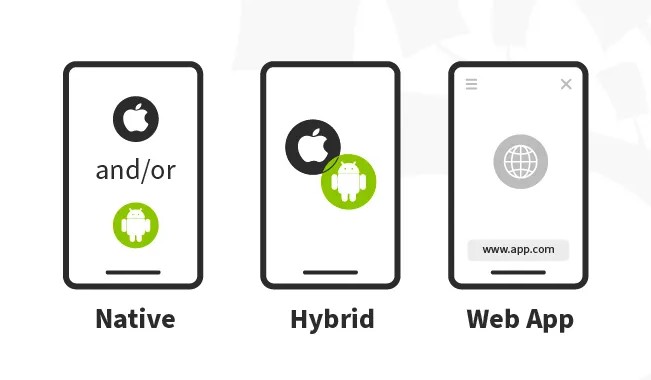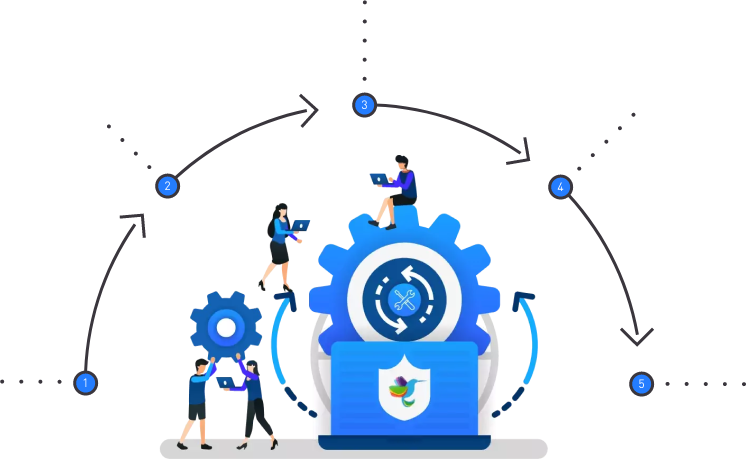A Step-by-Step Guide to Building Your Own Application

In today’s digital age, applications have become an integral part of our daily lives. Whether you want to create a mobile app, a web application, or a desktop program, the process of making an application can seem daunting at first. However, with the right guidance and a clear plan, you can turn your idea into a functional, user-friendly application. In this blog, we will walk you through the essential steps to build your own application, covering both the technical and non-technical aspects of the process.
1. Define Your Idea
The first step in building an application is to define your idea. What problem will your app solve? Who is your target audience? What features will it include? Answering these questions will help you create a clear vision for your application.
2. Market Research
Before you start developing your app, conduct thorough market research. Analyze your competition and identify gaps in the market that your application can fill. This research will help you refine your idea and ensure there’s a demand for your product.
3. Create a Business Plan

A well-structured business plan will outline your app’s purpose, target audience, monetization strategy, and financial projections. This document will be invaluable when seeking investors or planning your development process.
4. Design Your Application
Design is a critical aspect of creating an appealing and user-friendly app. Start by creating wireframes and mockups to visualize the user interface. You can use design tools like Adobe XD or Figma for this purpose. Ensure that your app’s design aligns with its purpose and target audience.
5. Choose a Development Approach

Depending on your app’s requirements and your technical expertise, you can choose one of these development approaches:
- Native App Development: Building separate versions of your app for each platform (iOS and Android) using platform-specific languages (Swift/Objective-C for iOS and Java/Kotlin for Android).
- Hybrid App Development: Using frameworks like React Native, Flutter, or Xamarin to build cross-platform apps that can run on both iOS and Android.
- Web App Development: Creating a web application using technologies like HTML, CSS, and JavaScript, which can be accessed through a web browser on various devices.
6. Develop Your Application
The development phase involves writing code, implementing the features, and testing your app’s functionality. It’s crucial to follow coding best practices, maintain clean code, and ensure that your app is free of bugs and glitches.
7. Testing and Quality Assurance
Thoroughly test your app on various devices and in different scenarios to identify and fix any issues. Consider involving beta testers to gather user feedback and make necessary improvements.
8. User Interface and User Experience (UI/UX) Design

Continuously refine the user interface and user experience to ensure your app is intuitive and visually appealing. Pay attention to user feedback and make design changes accordingly.
9. Security
Prioritize the security of your application. Implement encryption, authentication, and authorization mechanisms to protect user data and ensure a safe user experience.
10. Deployment

Once your app is ready, it’s time to deploy it to the intended platform(s). For mobile apps, this involves submitting your app to the Apple App Store and Google Play Store, while web apps can be hosted on web servers.
11. Marketing and Promotion
Promote your app through various marketing channels such as social media, app store optimization, email marketing, and partnerships. Build a marketing strategy to reach your target audience effectively.
12. Support and Maintenance

After launching your app, ongoing support and maintenance are crucial. Continuously monitor your app’s performance, fix bugs, release updates, and add new features based on user feedback and changing market trends.
Creating your own application can be a challenging but rewarding endeavour. By following these steps and staying committed to your vision, you can turn your idea into a fully functional application. Remember that success often comes with perseverance and the ability to adapt to changing circumstances. Good luck with your app development journey!
Write with us✍?
TeamUgtWorld warmly welcomes everyone! If you have something on your mind that you’d like to write about, we invite you to publish your content on our platform @Ugtworld. To learn more, please click on the link provided below.


